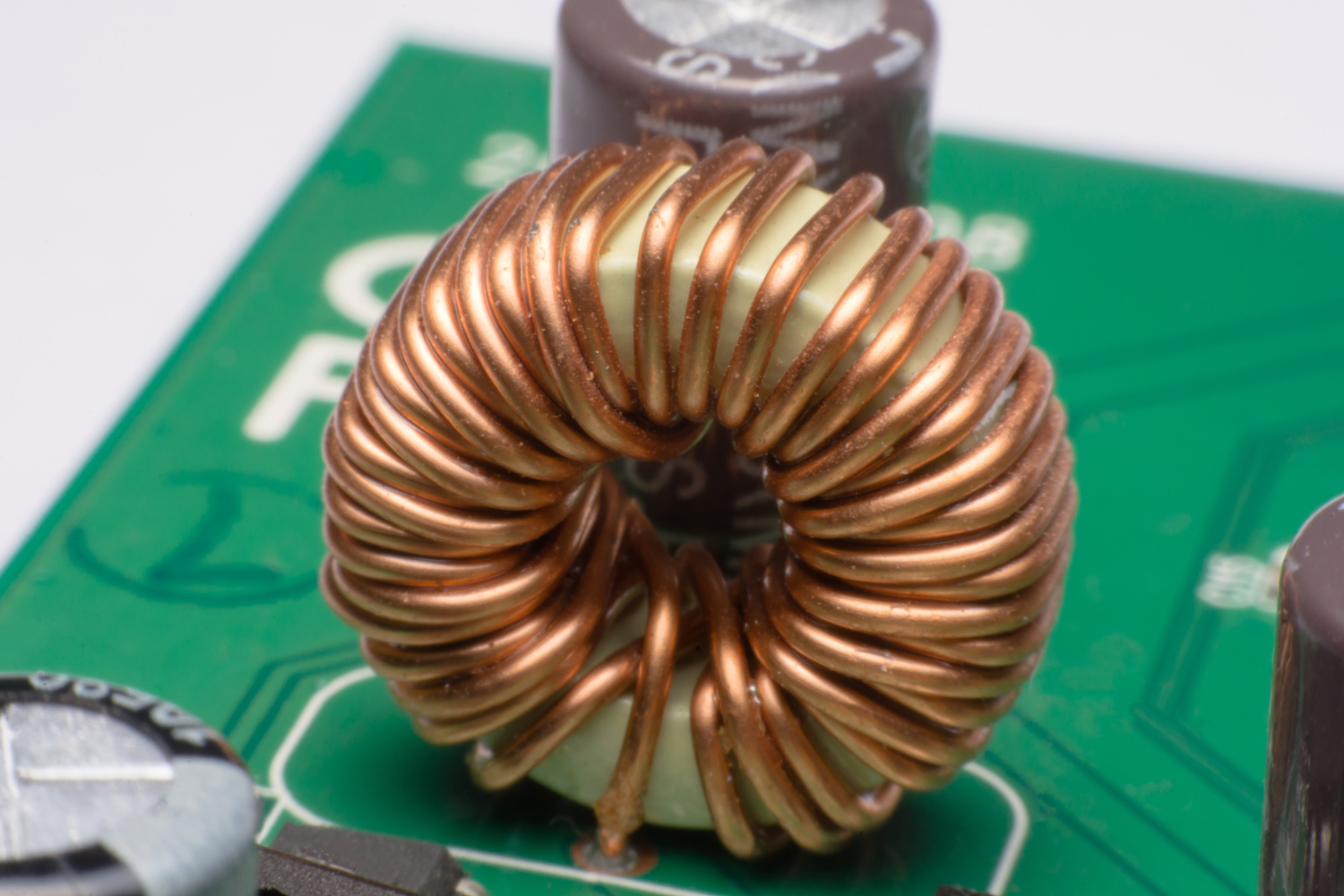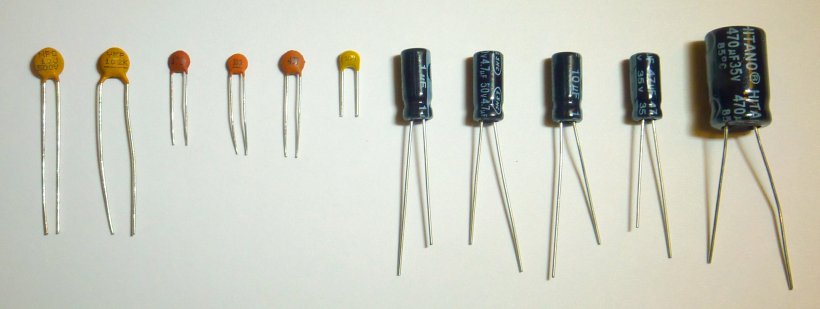Electricity Basics: Resistance, Inductance and Capacitance

Electronic circuits are integral parts of nearly all the technological advances being made in our lives today. Television, radio, phones and computers immediately come to mind, but electronics are also used in automobiles, kitchen appliances, medical equipment and industrial controls. At the heart of these devices are active components, or components of the circuit that electronically control electron flow, like semiconductors. However, these devices could not function without much simpler, passive components that predate semiconductors by many decades. Unlike active components, passive components, such as resistors, capacitors and inductors, can't control the electron flow with electronic signals.
Resistance
As its name implies, a resistor is an electronic component that resists the flow of electric current in a circuit.
In metals such as silver or copper, which have high electrical conductivity and therefore low resistivity, electrons are able to skip freely from one atom to the next, with little resistance.
The electrical resistance of a circuit component is defined as the ratio of the applied voltage to the electric current that flows through it, according to HyperPhysics, a physics resource website hosted by the department of physics and astronomy at Georgia State University. The standard unit for resistance is the ohm, which is named after German physicist Georg Simon Ohm. It is defined as the resistance in a circuit with a current of 1 ampere at 1 volt. Resistance can be calculated using Ohm's law, which states that resistance equals voltage divided by current, or R = V/I (more commonly written as V = IR), where R is resistance, V is voltage and I is current.
Resistors are generally classified as either fixed or variable. Fixed-value resistors are simple passive components that always have the same resistance within their prescribed current and voltage limits. They are available in a wide range of resistance values, from less than 1 ohm to several million ohms.
Variable resistors are simple electromechanical devices, such as volume controls and dimmer switches, which change the effective length or effective temperature of a resistor when you turn a knob or move a slide control.

Inductance
An inductor is an electronic component consisting of a coil of wire with an electric current running through it, creating a magnetic field. The unit for inductance is the henry (H), named after Joseph Henry, an American physicist who discovered inductance independently at about the same time as English physicist Michael Faraday. One henry is the amount of inductance that is required to induce 1 volt of electromotive force (the electrical pressure from an energy source) when the current is changing at 1 ampere per second.
One important application of inductors in active circuits is that they tend to block high-frequency signals while letting lower-frequency oscillations pass. Note that this is the opposite function of capacitors. Combining the two components in a circuit can selectively filter or generate oscillations of almost any desired frequency.
With the advent of integrated circuits, such as microchips, inductors are becoming less common, because 3D coils are extremely difficult to fabricate in 2D printed circuits. For this reason, microcircuits are designed without inductors and use capacitors instead to achieve essentially the same results, according to Michael Dubson, a professor of physics at the University of Colorado Boulder.

Capacitance
Capacitance is the ability of a device to store electric charge, and as such, the electronic component that stores electric charge is called a capacitor. The earliest example of a capacitor is the Leyden jar. This device was invented to store a static electric charge on conducting foil that lined the inside and outside of a glass jar.
The simplest capacitor consists of two flat conducting plates separated by a small gap. The potential difference, or voltage, between the plates is proportional to the difference in the amount of the charge on the plates. This is expressed as Q = CV, where Q is charge, V is voltage and C is capacitance.
The capacitance of a capacitor is the amount of charge it can store per unit of voltage. The unit for measuring capacitance is the farad (F), named for Faraday, and is defined as the capacity to store 1 coulomb of charge with an applied potential of 1 volt. One coulomb (C) is the amount of charge transferred by a current of 1 ampere in 1 second.
To maximize efficiency, capacitor plates are stacked in layers or wound in coils with a very small air gap between them. Dielectric materials — insulating materials that partially block the electric field between the plates — are often used within the air gap. This allows the plates to store more charge without arcing and shorting out.
Capacitors are often found in active electronic circuits that use oscillating electric signals such as those in radios and audio equipment. They can charge and discharge nearly instantaneously, which allows them to be used to produce or filter certain frequencies in circuits. An oscillating signal can charge one plate of the capacitor while the other plate discharges, and then when the current is reversed, it will charge the other plate while the first plate discharges.
In general, higher frequencies can pass through the capacitor, while lower frequencies are blocked. The size of the capacitor determines the cutoff frequency for which signals are blocked or allowed to pass. Capacitors in combination can be used to filter selected frequencies within a specified range.
Supercapacitors are manufactured using nanotechnology to create superthin layers of materials, such as graphene, to achieve capacities that are 10 to 100 times that of conventional capacitors of the same size; but they have much slower response times than conventional dielectric capacitors, so they can't be used in active circuits. On the other hand, they can sometimes be used as a power source in certain applications, such as in computer memory chips, to prevent data loss when the main power is cut.
Capacitors are also critical components of timing devices, such as those developed by SiTime, a company based in California. These devices are used in a wide variety of applications, from mobile phones to high-speed trains and trading on the stock market. Known as MEMS (microelectromechanical systems), the tiny timing device relies on capacitors to function properly. "If the resonator [the oscillating component within the timing device] doesn't have the right capacitor and load capacitance, the timing circuit will not start up reliably and, in some cases, it stops oscillating altogether," said Piyush Sevalia, the executive vice president of marketing at SiTime.
Additional resources:
- Read more about capacitance from Florida State University.
- More on the basics of electricity from New York University.
- Watch this video on electricity basics from The Engineering Mindset.
This article was updated on Jan. 16, 2019, by Live Science contributor Rachel Ross.
Sign up for the Live Science daily newsletter now
Get the world’s most fascinating discoveries delivered straight to your inbox.











